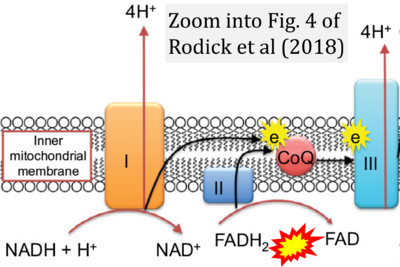Rodick 2018 Nutrition and Dietary Supplements
| Rodick TC, Seibels DR, Babu JR, Huggins KW, Ren G, Mathews ST (2018) Potential role of coenzyme Q10 in health and disease conditions. Nutrition and Dietary Supplements 10:1-11. https://doi.org/10.2147/NDS.S112119. |
Rodick TC, Seibels DR, Babu JR, Huggins KW, Ren G, Mathews ST (2018) Nutrition and Dietary Supplements
Abstract: Coenzyme Q10 (CoQ10), an endogenously produced compound, is found in all human cells. Within the mitochondria, it plays a substantial role in energy production by acting as a mobile electron carrier in the electron transport chain. Outside the mitochondria, it acts as an excellent antioxidant by sequestering free radicals and working synergistically with other antioxidants, including vitamin E. Dietary contribution is limited, making endogenous production the primary source for optimal function. Now widely available as an over-the-counter supplement, CoQ10 has gained attention for its possible therapeutic use in minimizing the outcomes of certain metabolic diseases, notably cardiovascular disease, diabetes, neurodegenerative disease, and cancer. Research has shown positive results in subjects supplemented with CoQ10, especially in relation to upregulating antioxidant capability. Emerging research suggests beneficial effects of CoQ10 supplementation in individuals on statin medications. CoQ10 supplementation in individuals participating in strenuous exercise seems to exert some beneficial effects, although the data are conflicting with other types of physical activity. This broad review of current CoQ10 literature, while outlining its physiological/functional significance in health and disease conditions, also offers a dietitian’s perspective on its potential use as a supplement in the promotion of health and management of disease conditions.
• Bioblast editor: Gnaiger E
Correction: FADH2 and Complex II
- FADH2 is shown as the substrate feeding electrons into Complex II (CII). This is wrong and requires correction - for details see Gnaiger (2024).
- Gnaiger E (2024) Complex II ambiguities ― FADH2 in the electron transfer system. J Biol Chem 300:105470. https://doi.org/10.1016/j.jbc.2023.105470 - »Bioblast link«
Labels:
Enzyme: Complex II;succinate dehydrogenase


